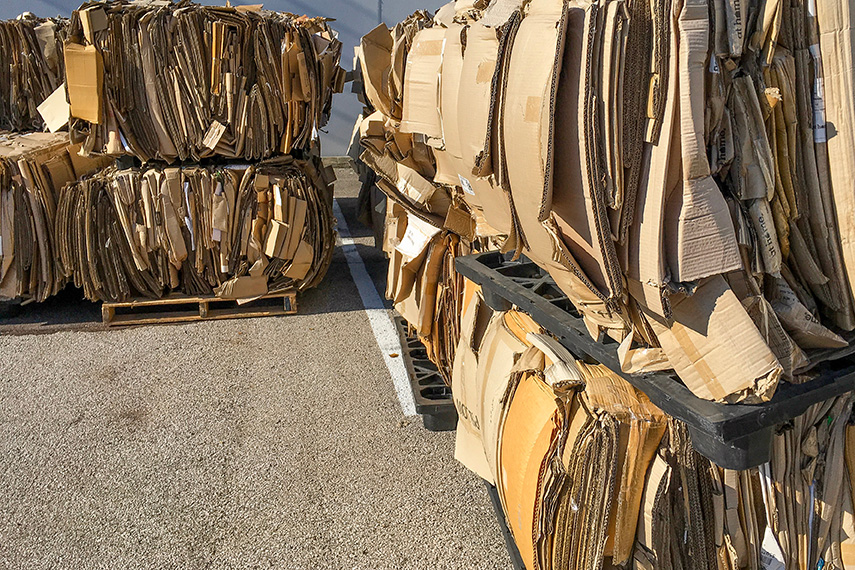
Recently published figures from the Northeast Recycling Council unpacked the proportions of materials in curbside recycling bales. | Philip R/Shutterstock
For all the global, national and state-level arguments and policymaking surrounding plastics, paper continues to increase its already-large share of the curbside bin, new data shows.
The Northeast Recycling Council (NERC) recently published data on the average composition of curbside recycling bales from several northeastern U.S. MRFs in 2022. The data was included in a quarterly recyclables pricing survey published by the group.
The data shows OCC and mixed paper continue to make up a larger percentage of commodities marketed by MRFs. In 2020, OCC made up 28% of marketed tons while mixed paper accounted for 25%. In 2022, OCC was 33% and mixed paper was 30%.
Cartons remain a very small percentage of the curbside mix. The data does show that other types of paper (not OCC, mixed paper or cartons) declined slightly from 7% of outbound tons in 2020 to 6% in 2022. That was likely a result of the continuing shift to people getting their news online and the resulting decline in magazine- and newspaper-specific bales.
Taken together, fiber made up about 69% of outbound tons in 2022, up from about 60% two years earlier.
Residuals, which are materials that can’t be marketed and are either landfilled or incinerated, remained steady at 16% of the mix.
Pricing down sequentially and year over year
NERC also published information on the blended values of a ton of recyclables for the second and third quarters of 2023.
For the second quarter, the blended value of a ton (not counting the negative impact of residuals) was $85.63, up 10% from the first quarter of the year but down 53% year over year. Including the financial bite from residuals, the value was $76.99 in the second quarter, up 13% from the first quarter but down 55% year over year.
For the third quarter, the blended value (not counting residuals) was $72.77 per ton, down 15% from the second quarter and down 34% year over year. Counting residuals, the value was $63.95 per ton, down 17% from the second quarter and down 36% year over year.
The quarterly survey also asks MRFs about their processing costs, meaning their costs to sort and sell recyclables. In the second and third quarters of this year, the average of those costs was $88 per ton. That was down from $93 per ton during the first quarter.
In the second quarter of 2022, processing costs averaged $85, and in the third quarter they averaged $93.